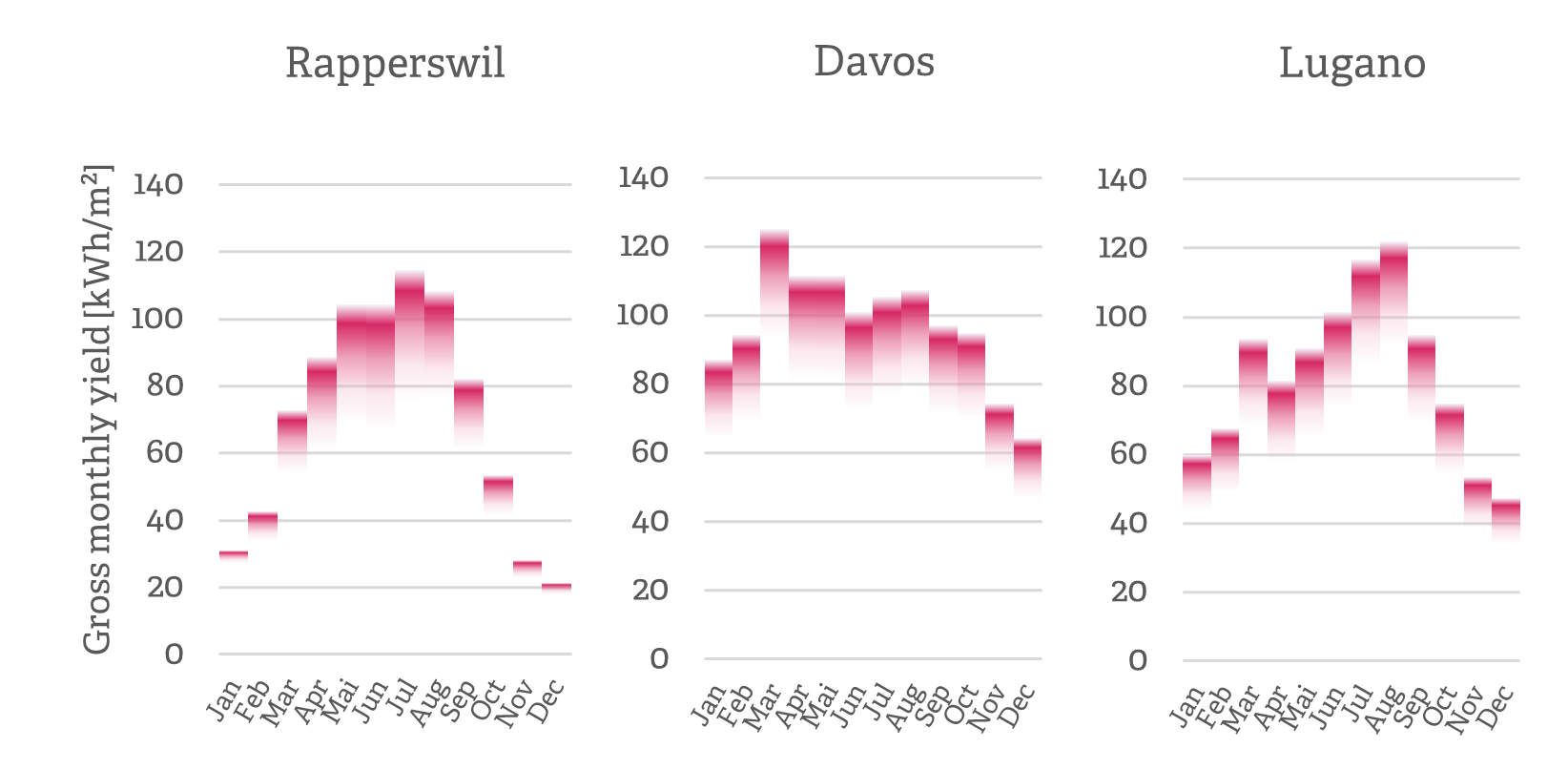DeCarbCH Wiki Technologies - Solar Energy
Evacuated Tube Solar Collector
Evacuated Tube Solar (ETC) use evauated glass tubes to prevent heat losses. These collectors are produced in large quantities in asia, but are less widespread in Switzerland (and Europe) than flat-plate collectors.
Evacuated tube solar collectors (ETC) consist of a series of evacuated glass, with a metal absorber tube located inside the glass tube. The aluminium sheet conducts the heat to a fluid-carrying tube, usually made of copper. The selective coating on the absorber tube enhances the absorption of solar radiation and minimizes the amount of heat loss.

The vacuum insulation minimizes heat loss and allows the collector to maintain high temperatures even in adverse weather conditions. These collectors have low heat losses, good harvesting of direct and diffuse radiation and they reach elevated temperatures as output. The efficiency is also elevated at flat incidence angles and a horizontal installation on flat surface is possible. To prevent freezing during cold winter nights, some energy is used to keep the collector field temperature above zero degrees. ETC are used to generate temperatures up to 150 °C, but can reach stagnation temperatures over 300 °C. These high temperatures allow direct integration into a water-bearing network. When connected to district heating systems, they achieve annual energy outputs in the range of 500-800 kWh/m2 (gross) under Swiss conditions. For district heating systems, special large-scale collectors with a surface area of up to 15 m2 are available. The investment costs are in the range of 280 to 450 CHF/m2 without costs for planning and permits.
Typical monthly performance of ETC in Switzerland.
Swiss and international Market Vacuum tube collectors dominate the global solar thermal market due to the Asian market for domestic hot water. Several large installations exist in Europe, including Germany's largest solar thermal field in Greifswald. Switzerland also has some large installations in district heating networks, for process heat generation or large building complexes as for example the Tic Tric Trac buildings in Zürich.
Construction
Evacuated tube solar collectors (ETC) consist of a series of evacuated glass, with a metal absorber tube located inside the glass tube. The aluminium sheet conducts the heat to a fluid-carrying tube, usually made of copper. The selective coating on the absorber tube enhances the absorption of solar radiation and minimizes the amount of heat loss.

- Cover glass
- Conductive sheet
- Heat carrier
- Vacuum
- Absorber coating
- CPC reflector
Performance
The vacuum insulation minimizes heat loss and allows the collector to maintain high temperatures even in adverse weather conditions. These collectors have low heat losses, good harvesting of direct and diffuse radiation and they reach elevated temperatures as output. The efficiency is also elevated at flat incidence angles and a horizontal installation on flat surface is possible. To prevent freezing during cold winter nights, some energy is used to keep the collector field temperature above zero degrees. ETC are used to generate temperatures up to 150 °C, but can reach stagnation temperatures over 300 °C. These high temperatures allow direct integration into a water-bearing network. When connected to district heating systems, they achieve annual energy outputs in the range of 500-800 kWh/m2 (gross) under Swiss conditions. For district heating systems, special large-scale collectors with a surface area of up to 15 m2 are available. The investment costs are in the range of 280 to 450 CHF/m2 without costs for planning and permits.

Swiss and International Market
Swiss and international Market Vacuum tube collectors dominate the global solar thermal market due to the Asian market for domestic hot water. Several large installations exist in Europe, including Germany's largest solar thermal field in Greifswald. Switzerland also has some large installations in district heating networks, for process heat generation or large building complexes as for example the Tic Tric Trac buildings in Zürich.